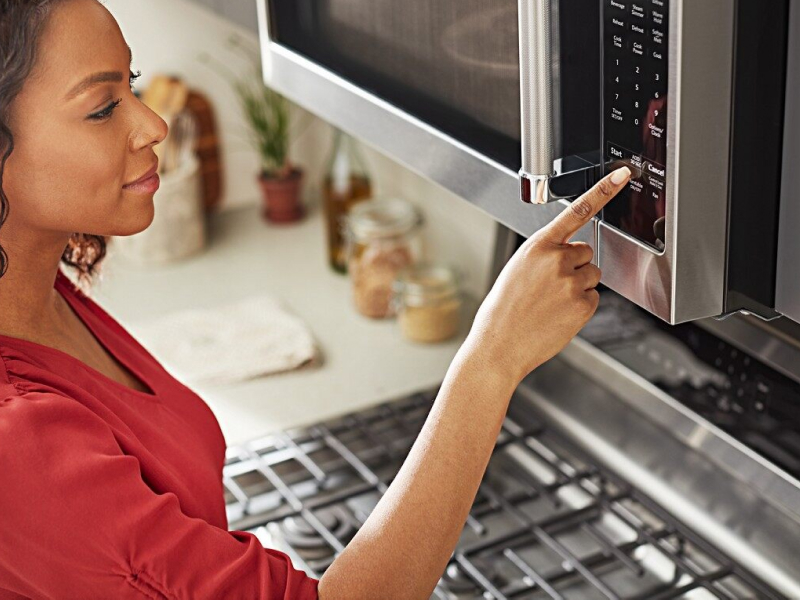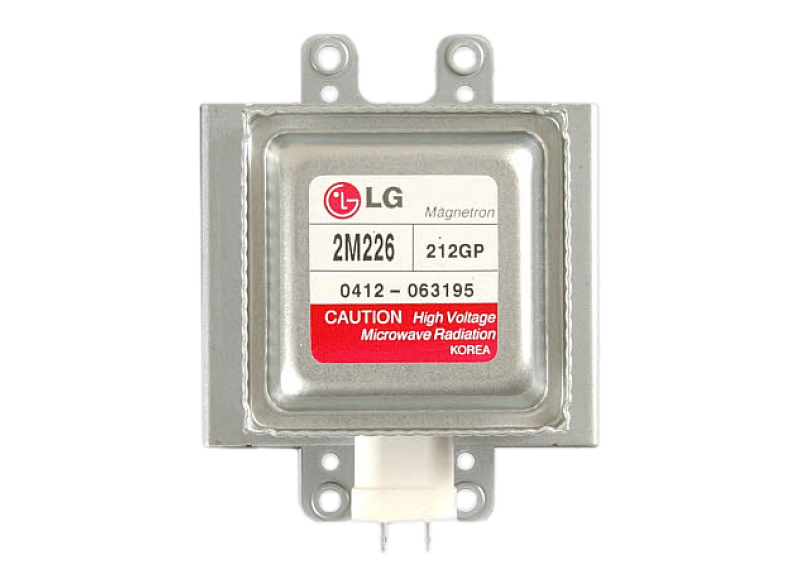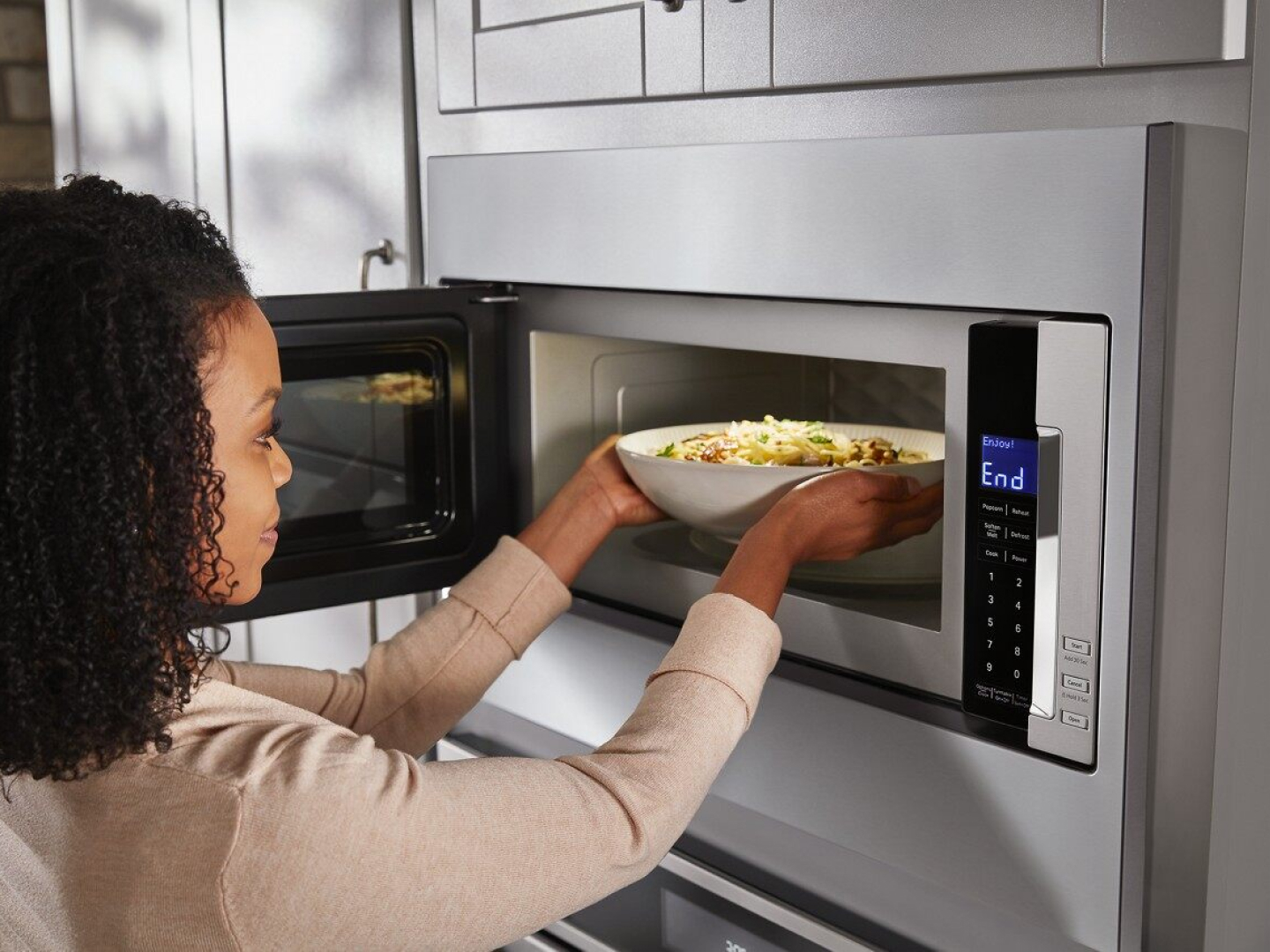
How to troubleshoot a microwave that’s not heating
Proving that powerful features can come in small appliances, microwaves are designed with capabilities beyond simply heating up leftovers. As important appliances in many recipes, having a functioning microwave can be integral for your making. Follow this guide to help identify possible reasons your microwave isn’t working and solutions to try on your own.


What causes a microwave not to heat up?
Some typical causes of a microwave not heating up belong to one of two categories: functional or mechanical. Functional issues arise when settings, such as Control Lock Mode or a low power level, are engaged, causing food not to heat. Mechanical issues occur when parts of the appliance malfunction, requiring the appliance to be repaired or those faulty parts replaced.
Microwave not heating: Possible problems & solutions
When troubleshooting your microwave, your problem may be a simple operational fix or a complicated repair that requires part replacements or a new unit. Read on to learn more about seven possible reasons your microwave is not heating up.

1. Defective door switch
Your microwave is designed not to run if the door is ajar. If your microwave light does not come on when you open the door, it could be a sign that your door switch is not latching properly. Firmly close it and remove the packing spacer located inside the door. If the latch is shutting properly, move on to another possible cause.

2. Disconnected from power
It can be easy to forget that a possible reason your microwave isn’t working is due to the power connection. First, check that the power supply is plugged into a grounded outlet. Then test the outlet by plugging in a small household item to see whether it receives power. If the outlet isn’t working, check your circuit breaker.

3. Error/display codes
When your microwave is displaying an error or display code, it may not heat up. Common codes include the Control Lock function, which keeps you from unintentionally starting a cooking cycle while you're cleaning the control panel. Demo Mode is another code that shows the functionality of the appliance by rotating the turntable, lighting the microwave cavity and activating the fan, but not actually heating. If you see an error or display code on your microwave, check your owner’s manual for more information.

4. Low-power level
If your microwave is functioning but not heating, it could be because you have a low-power level selected. Microwaves typically have 5-10 power settings, and each setting is responsible for heating a different kind of food. When in doubt, check your power level settings to see whether they align with the food you are trying to cook.

5. Delay start
Select microwave models have a Delay Start feature that allows you to select the settings for your microwave and then delay the start of your cooking with a unique timer. If your microwave is not starting up, check to make sure that your Delay Start feature isn’t engaged, and if it is, try starting the heating process again.

6. Defective magnetron
The magnetron is the part that produces electromagnetic waves inside your microwave’s internal cavity to warm your food. When this part is not working, the microwave will not heat and might also blow a fuse. Magnetrons generally can’t be repaired and due to the electrical component of a replacement, it is recommended that you contact a professional if you believe the part is defective.

7. Broken high voltage diode
Often located behind the microwave’s front panel (near the controls), the high-voltage diode provides electricity to the magnetron. Therefore, if the diode is not working, your microwave will not be able to heat. As with the magnetron, this part requires electrical knowledge, which means you should contact a professional.
Is there a reset button on a microwave?
Most microwaves do not come with a reset button. However, there is an easy process to reset KitchenAid® microwaves. Clear any display or error codes and unplug your microwave for one minute. After plugging it back in, attempt to heat one cup of cold water for two minutes at 100% cooking power. If the reset has worked, the water will heat.


Can you repair a microwave yourself?
It is possible to repair a microwave yourself in certain cases when the issue is functional and related to your microwave’s settings. However, if the issue is mechanical, it will be much more difficult to fix. Consult your owner’s manual for unit-specific troubleshooting suggestions and when in doubt, contact a professional to service your microwave.
Is it worth it to repair a microwave?
The decision to repair a microwave is a calculation between the cost of the appliance versus the cost of the repair. For reference, compact microwaves cost far less than models with those with advanced features. If you have an advanced feature microwave model with convection cooking, for example, you may want to repair it; however, if you have a compact model, it may be worth it to purchase a new one as opposed to paying for the repair.


Get assistance repairing your microwave
If you are ever experiencing difficulty with operating or troubleshooting your KitchenAid® microwave, visit the KitchenAid Customer Care Center. There you can locate your microwave’s model manual, purchase replacement parts and schedule a service visit with a qualified technician to potentially restore your microwave to working condition.
Explore KitchenAid® microwaves
With options ranging from countertop to built-in to microwave hood combinations, you can find a KitchenAid® microwave to aid your cooking and meal-prepping needs. Features on select models like Convection Cooking and Air Fry Mode allow you to try new cooking methods in your microwave while also crisping and browning your food.
